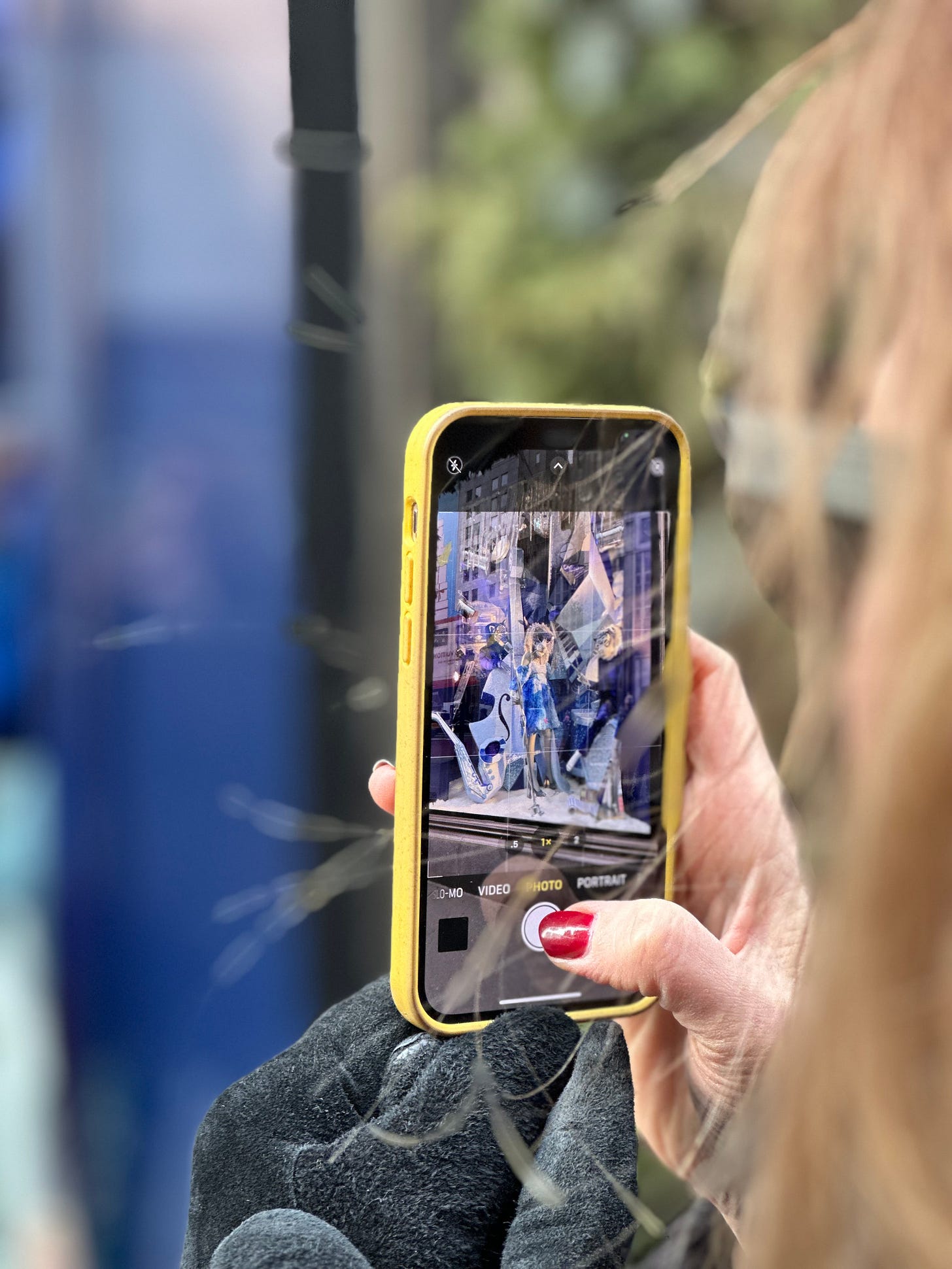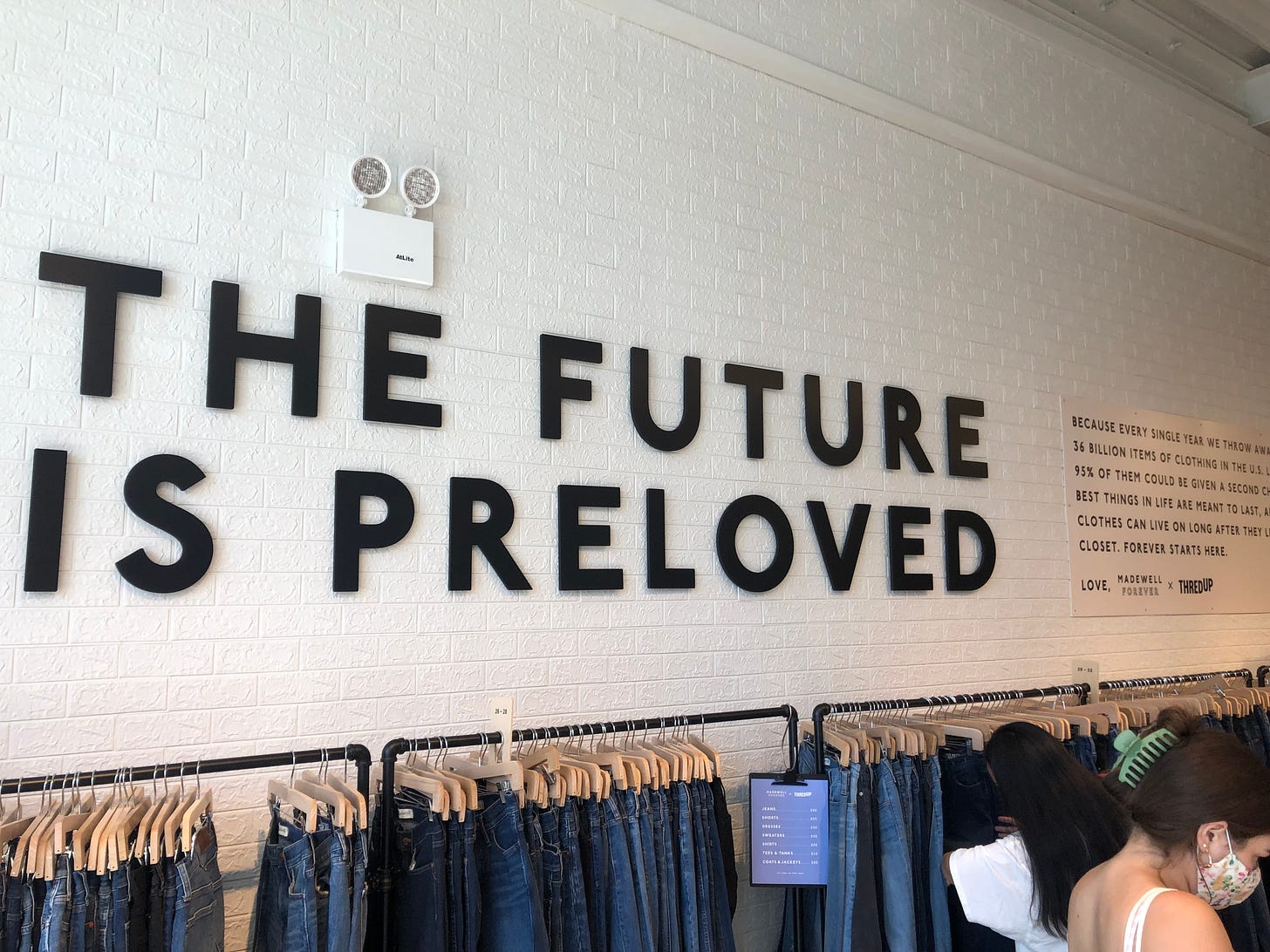Living My Values: A Tech Humanist's Guide to Conscious Choices
What matters next isn't just what we build—it's how we choose to live with it.
How do we align our daily choices with our deepest values? As someone who thinks constantly about the intersection of technology and humanity, I've developed practices that help me navigate this complex terrain. Here's what works for me—not as a prescription, but as an invitation to consider your own path toward what I call in my book A Future So Bright "strategic optimism"—taking meaningful action while maintaining hope.
The most radical act in an automated world is to make conscious choices.
When algorithms increasingly decide what we see, buy, and believe, deliberately steering our own lives becomes an assertion of humanity.
The Clothing Conundrum: Beyond Fast Fashion
I source most of my clothing secondhand, a practice that began with teenage thrift-store adventures and evolved into a conscious stance against exploitative supply chains. Beyond the environmental benefits of keeping textiles out of landfills, this choice reflects a broader understanding: every purchase is a vote for the kind of world we want to create.
When the average American throws away 81 pounds of clothing annually, our closets become unexpected battlegrounds for sustainability. The irony isn't lost on me that our digital transformation has accelerated fast fashion while simultaneously giving us tools to make better choices.
Eating Like The Future Depends On It (Because It Does)
My plant-based diet (vegan since '98) similarly aligns with both environmental and ethical considerations. I optimize for local, seasonal ingredients and consider resource intensity in my choices—for instance, choosing oat milk over water-intensive alternatives. These aren't just personal health decisions; they're acknowledgments of our interconnected food systems.

The tech parallels are striking: just as we need to consider the resource intensity of our digital infrastructure (hello, energy-hungry data centers), we must examine what we put on our plates. This exemplifies what I call in What Matters Next "human-friendly tech decisions"—choices that acknowledge the real-world impacts of our innovations.
Conscious Mobility: The Carbon Footprint Shuffle
In my extensive work travel, I practice what I call "conscious mobility"—integrating personal exploration with business trips to minimize unnecessary flights. This approach exemplifies how we can thoughtfully engage with global opportunities while respecting planetary boundaries.
Digital transformation promised us less physical travel, yet here we are, more connected and somehow still flying around the world. The contradiction isn't lost on me—which is precisely why mindfulness matters. In leadership terms, this is about aligning our focus, purpose, values, and resources across all domains of our lives.
Technology makes many things possible, but possibility isn't the same as necessity. The most powerful word in a tech-driven world might be "enough."
Small Acts, Big Systems
The small acts matter too: carrying reusable items, composting, minimizing packaging waste. But these individual choices gain real power when coupled with support for organizations driving systemic change. Both/and thinking, not either/or.
As I've written here and elsewhere many times before, tech-enabled systems thinking doesn't absolve us of individual responsibility—it enhances our ability to make meaningful choices within complex systems. This is part of what I mean by "bankable foresights" in my work—the kind of insights that help us navigate an increasingly complex future.
Meaningful Economics: Voting With Your Wallet (While Recognizing Its Limitations)
My purchasing decisions reflect a commitment to what I call "meaningful economics"—supporting businesses that demonstrate good corporate citizenship and those owned by traditionally marginalized groups. The economy is people, after all, and our spending shapes the marketplace.

In an age where algorithms increasingly decide what products we see and buy, consciously directing our economic activity becomes a radical act of human agency. This exemplifies how we can encode human-centric values into our interaction with technology—a core concept from What Matters Next.
Work That Works: Beyond The Paycheck
In my work, I seek projects that advance human flourishing while respecting technological and ecological limits. This sometimes means declining opportunities that don't align with these values. It's about playing the long game: optimizing for impact over immediate gain.
The question for tech isn't just "Can we build it?" but "Should we build it?"—a distinction I explore in my talks on ethical technology development. Technology acceleration requires us to be more thoughtful than ever about the solutions we create and support.
The greatest innovation may not be what we create, but what we consciously choose not to create. Knowing when to say no is as important as knowing how to build.
Digital Boundaries: The Ultimate Luxury Good
Digital boundaries are crucial in our hyper-connected world. I maintain regular tech-free periods and prioritize face-to-face connections. This isn't about rejecting technology—it's about using it intentionally to enhance rather than diminish our humanity.

In a world where attention is the ultimate currency, protecting yours is both self-care and resistance. It's about understanding the intersection and potential harmony of human knowledge and machine intelligence—knowing when each serves us best.
The Strategic Optimist's Path Forward
Here's what I've learned: perfection isn't the goal. What matters is making conscious choices while recognizing that meaningful change requires both individual action and collective effort. We're all learning as we go, adjusting our practices as new information and opportunities emerge.
Strategic optimism isn't naive hope—it's the disciplined practice of creating the future we want while acknowledging the challenges we face. It's the hardest and most necessary work of our time.
The key is to remain both optimistic about technology's potential to enhance human thriving while clear-eyed about its challenges. This is the essence of both Tech Humanism and Strategic Optimism: acknowledging problems while actively working toward solutions. In a world that's moving too fast, what matters next isn't just the technology we create—it's how thoughtfully we choose to live with it, within it, and sometimes despite it.
What conscious choices are you making at the intersection of technology and humanity? I'd love to hear your practices in the comments below.
For more frameworks on making better choices in a tech-accelerated world, check out my latest book, What Matters Next: A Leader's Guide to Making Human-Friendly Tech Decisions in a World That's Moving Too Fast.
About Kate O'Neill: Known as "The Tech Humanist," Kate is a strategic advisor helping companies and cities make technology better for humans. She's the author of several books on technology and humanity, including "Tech Humanist," "A Future So Bright," and her latest, "What Matters Next." Kate has been featured in The Wall Street Journal, WIRED, and on BBC, and has advised organizations including Google, IBM, and the United Nations on human-centric approaches to digital transformation. Follow her insights at koinsights.com or connect on LinkedIn.



